Backpacking Alone With Two Dogs
A few days ago someone asked me, in so many words, if I was worried about something happening to one or both of the dogs when I'm out backpacking with them by myself. The short answer is absolutely. The longer answer is something I'll discuss in this post. But first, since I haven't posted in a while I want to take a moment to thank our newest monthly patron here at the Love Dogs Adventure Blog. I don't like to embarrass or call out people by name -- they know who they are -- but I now have two monthly patrons helping to keep this blog growing and to keep our adventures going (we are sponsor-free and ad-free at this point in our journey). Our most recent supporter told me that the Love Dogs blog reminds her of the outdoor adventures she had with one of her own dogs some time ago, and that makes my heart very happy. Thank you.
"What if something happens to them when you're out there by yourself?"
It was just me and the dogs on a recent backpacking trip. I know it seems very risky to many people for me to be out in such remote areas on foot by myself with two big dogs. It is risky. But so is backpacking in those areas with young kids, with friends, with a pack mule, or on a horse, and people do those things often without a second thought. Am I concerned about going out there alone with my dogs? Of course I am. I'm constantly running worst-case scenarios in my mind and determining how I would handle them if they occurred. I use critical thinking skills to determine which scenarios are most likely to actually happen, and I pack first aid supplies and gear that would help mitigate and/or deal with them. I also pay attention when I'm out there, to others on the trail, to wildlife, to the temperature, to the terrain, and to how my dogs are acting and reacting to all of these things. I'm hyper vigilant, constantly scanning the scene and making risk assessments. I've got two well-trained dogs -- trained specifically for the trail, and I have acquired and continue to improve and update my own backcountry and dog training skills. These things help me feel more at ease when I'm out there with them, alone or not. Does it completely eliminate risk? No. It will always be necessary for me to weigh the risk, every step of the way, and try to make the very best decisions for myself and my dogs. It's important to understand that anything can happen, well-trained or not.
What I'm actually more concerned about is something happening to me while I'm out there alone with my dogs. As long as I'm with them, I can navigate challenging scenarios and do my best to keep them safe. But if something happens to me, they're on their own. That scares me much more than the thoughts of having to deal with something happening to either or both of them.
Satellite Devices: for dog emergencies, or just human?
Back when I was on social media, I recall reading a thread on Facebook that was started by an angry backcountry adventurer about people using their satellite devices to call in rescues for their dogs. "Leave your dogs at home!" was the general tone of the thread. This is a popular opinion, it seems. But it is just opinion. There is no law that prohibits calling SAR (Search and Rescue) to help dogs in remote backcountry areas in the United States, and in fact one issue of a Garmin newsletter actually addressed this by sharing stories of dog rescues they've organized over the years (it was enlightening on all accounts). When it comes down to it, I will absolutely without hesitation push that emergency button on my inReach Explorer for my dogs if I need to do so.
I do not in any way encourage taking dogs into the backcountry without knowing the risks and being able and willing to exercise proper judgment and risk mitigation to keep them safe. However, I also do not in any way discourage taking dogs into the backcountry if you are properly prepared and willing to treat their well-being as you would any human's in your group. I believe that my dogs are sentient beings, worthy of inclusion in my active life, of living in ways that make them happy for the very short time they're here, and of being rescued whenever and however necessary. All of this with the understanding that safety (mine, my dogs' and others') is of utmost importance.
I've written before about some of the things I do to train and prepare for going out into rugged and remote terrain with my dogs, and I'll continue to write about it as I continue to learn, adjust, and improve my skills. If there's something you'd like to know about backcountry foot travel with dogs that I haven't yet discussed, please let me know and I'll add it to the topic list.
AAR FOR THIS TRIP
We saw quite a few deer, one that crossed the trail just a few yards in front of us, two does that were just off the trail maybe 100 yards in front of us, and a doe that munched on grass and bedded down right near our campsite. Both dogs did so great. No chases ensued, not even an attempted chase. Just a couple of boofs from inside the tent and a whole lot of curious watching. The e-collar training has worked particularly well for us with regard to wildlife avoidance. Once again, Benadryl and Green Goo proved useful. Hazel developed some small bumps on her shoulder that looked kind of like human poison ivy reaction. It's mostly healed now. The two most-used first aid items in my pack right now are Benadryl and Green Goo salve (I use the Green Goo on everything from paw pads to superficial cuts and rashes and it is really effective). The Ruffwear Knot-a-Hitch has gotten quite a bit of trail use now, and I definitely see it as an essential piece of gear. It allows me to relax a little while I eat, explore an area to make photos, and do other things while the dogs are secured to the line. So helpful. I actually purchased some 8.5mm climbing rope and decided to learn some appropriate knots in order to decrease pack weight and just carry rope that I could run between two trees, but honestly the same length of 8.5mm climbing rope is almost as heavy as the Ruffwear Knot-a-Hitch. I'll probably just keep packing the Ruffwear gear, and maybe learn some knots anyway because I really should know more than a half hitch and double half hitch.
In closing, below are some photos and video from this adventure. We did 12 miles out-and-back on Segment 20 of The Colorado Trail. It's a particularly remote section of trail. The original plan was to go 25 miles (12 miles out-and-back, since there's no vehicle access at the end) to complete this segment in four days, but we camped at 6 miles in and I realized that 1) I somehow misplaced my tent stakes and with a tent that's not fully free-standing, and a forecast calling for lots of rain, I really needed them in order to go on and not be miserably wet; 2) my camera battery died and I grabbed the wrong charging cable, so I couldn't re-charge it; 3) for some reason I just couldn't settle into the rhythm of my feet and my breath this trip. My thoughts were elsewhere and pretty heavy. Maybe it was the news I'd been listening to in the car before arriving. I don't know, but we had a nice overnighter and went back to the car. One thing is for sure, it is never time wasted.
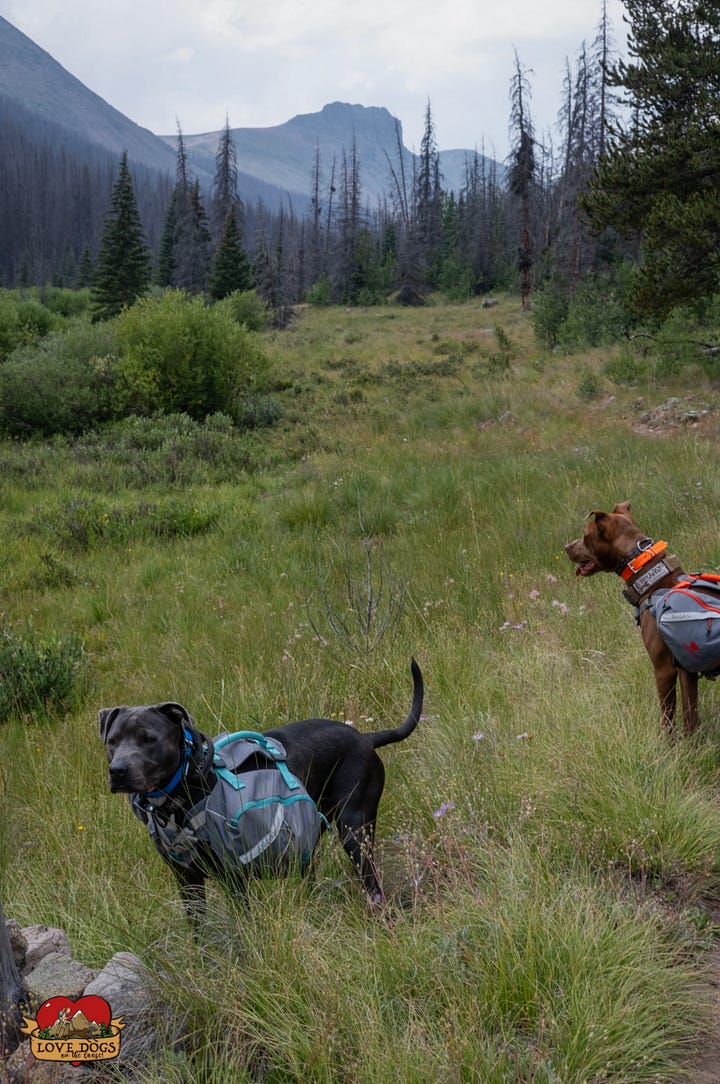
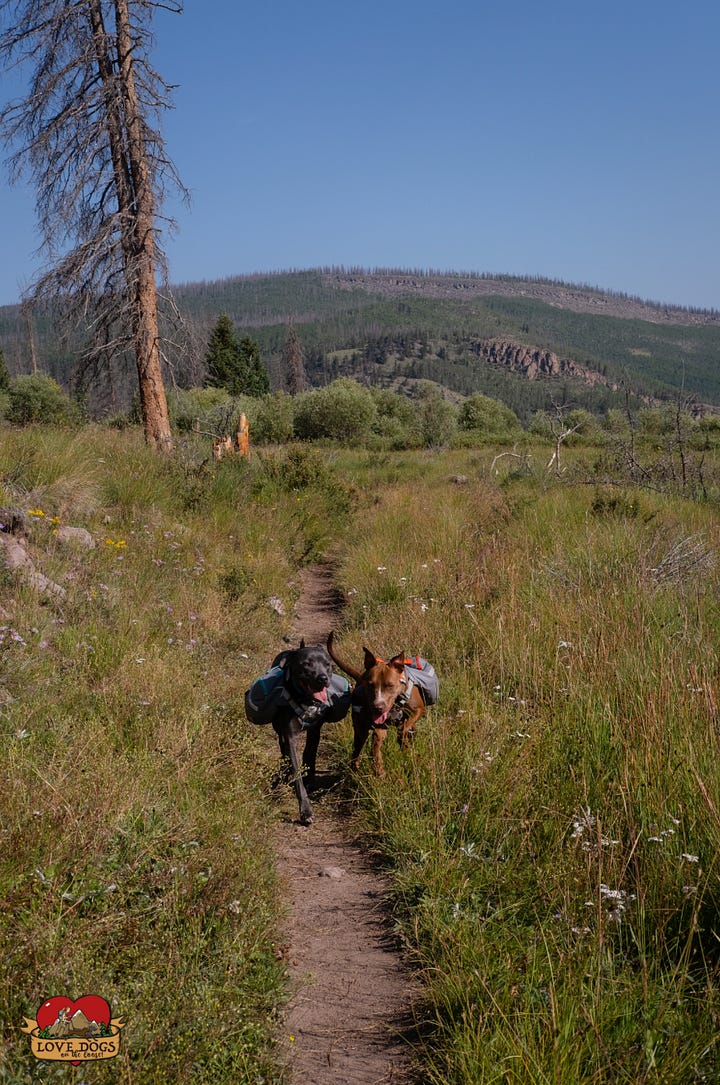
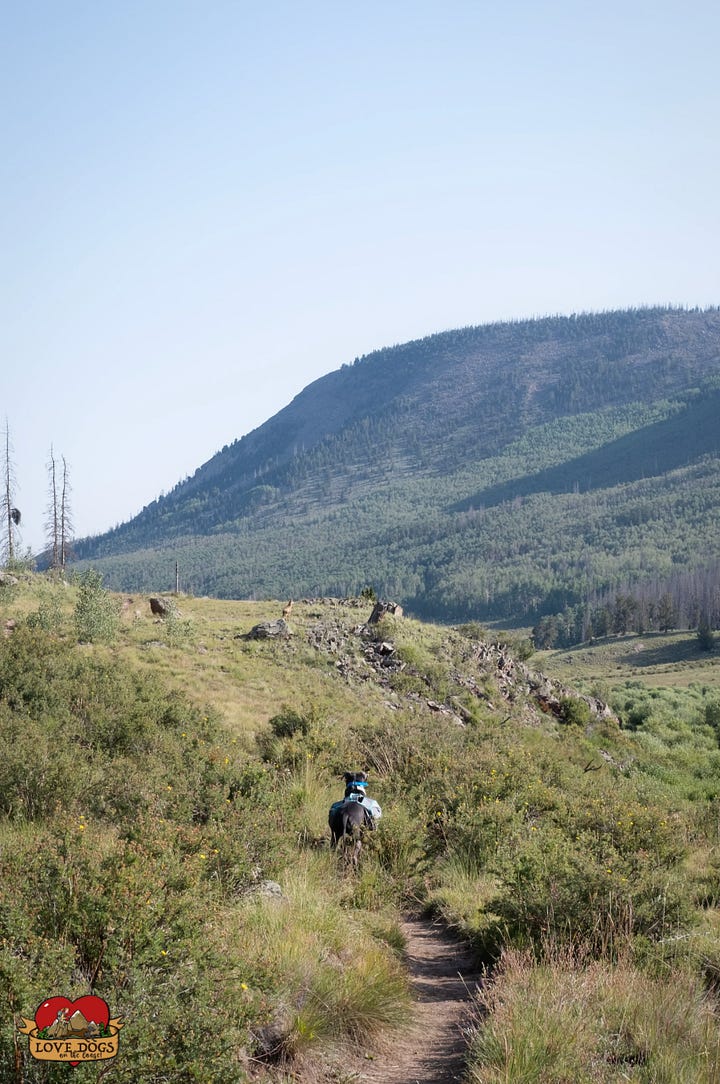
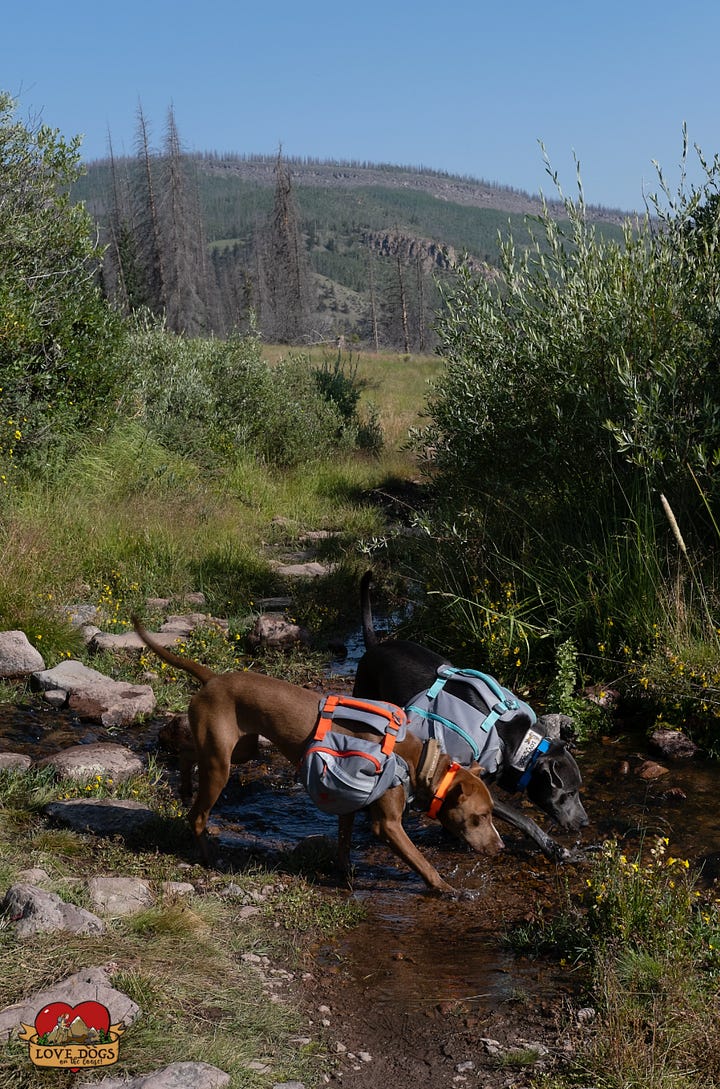
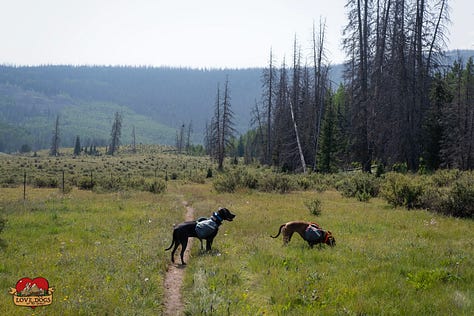
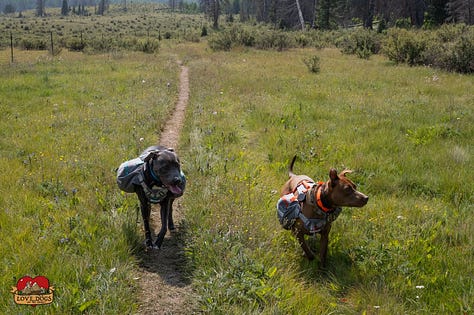
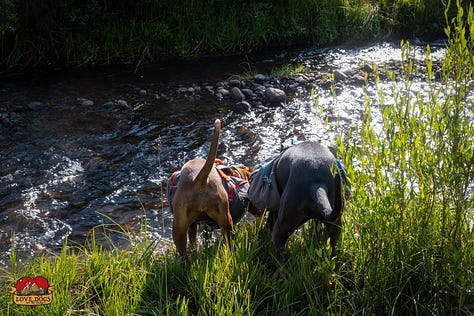
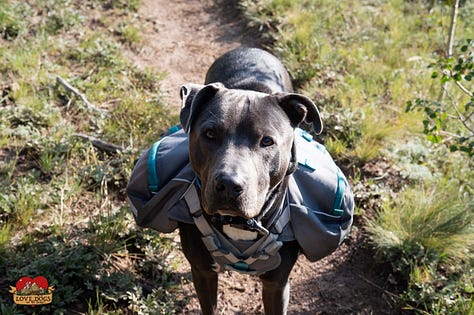
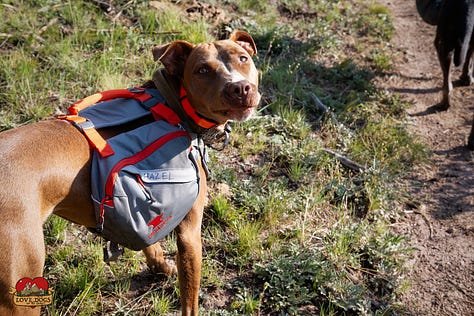
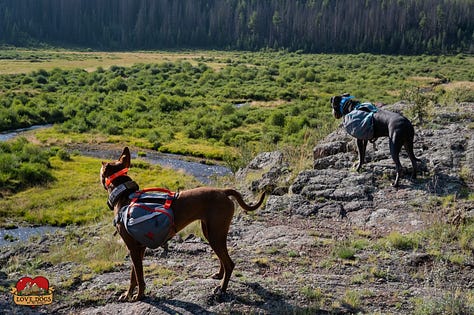
VIDEO #1: SINGLE TRACK BACKPACK BUMPER DOGS
I created a sort of blooper reel from this trip that shows Hazel's obsessive need to be lead dog on the trail. I recommend watching it a couple of times - once to watch Hazel and again to watch Japhy's reaction to her. He's so very patient with her. That's my sweet boy.
VIDEO #2: FULL TRIP VIDEO
I started a new YouTube channel a few months ago for my photography and outdoor work, and I've been sharing full trip videos there. Of course, the dogs definitely are in those videos as well, so if you'd like to watch them you can head over to my YouTube channel and subscribe. Or you can watch this particular trip video below.



